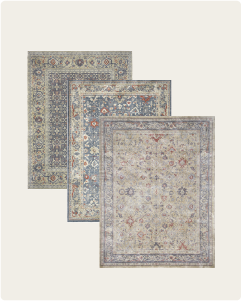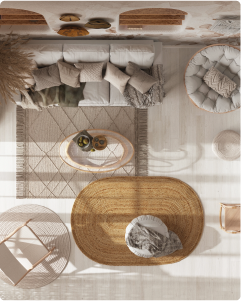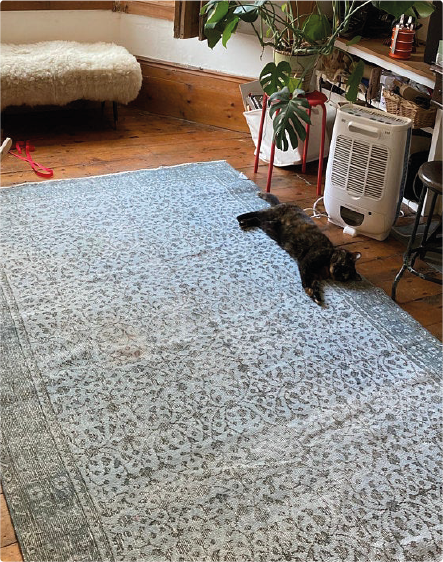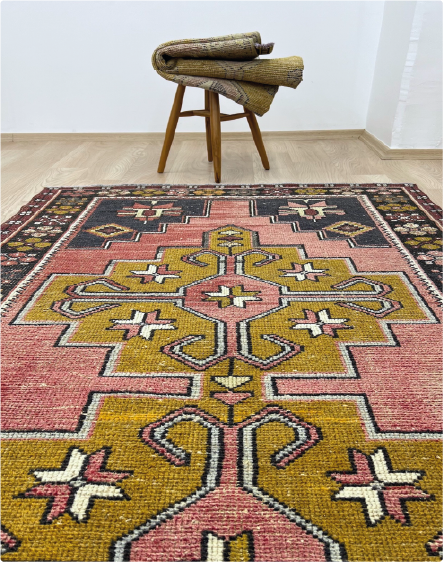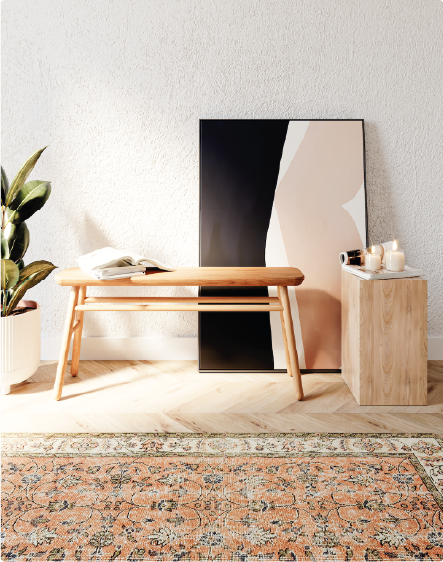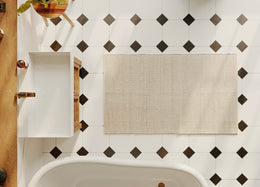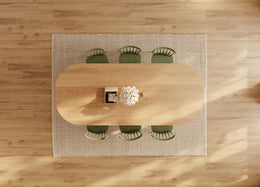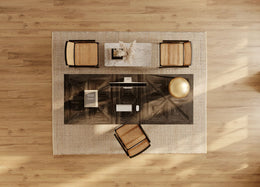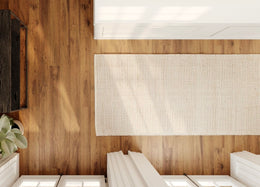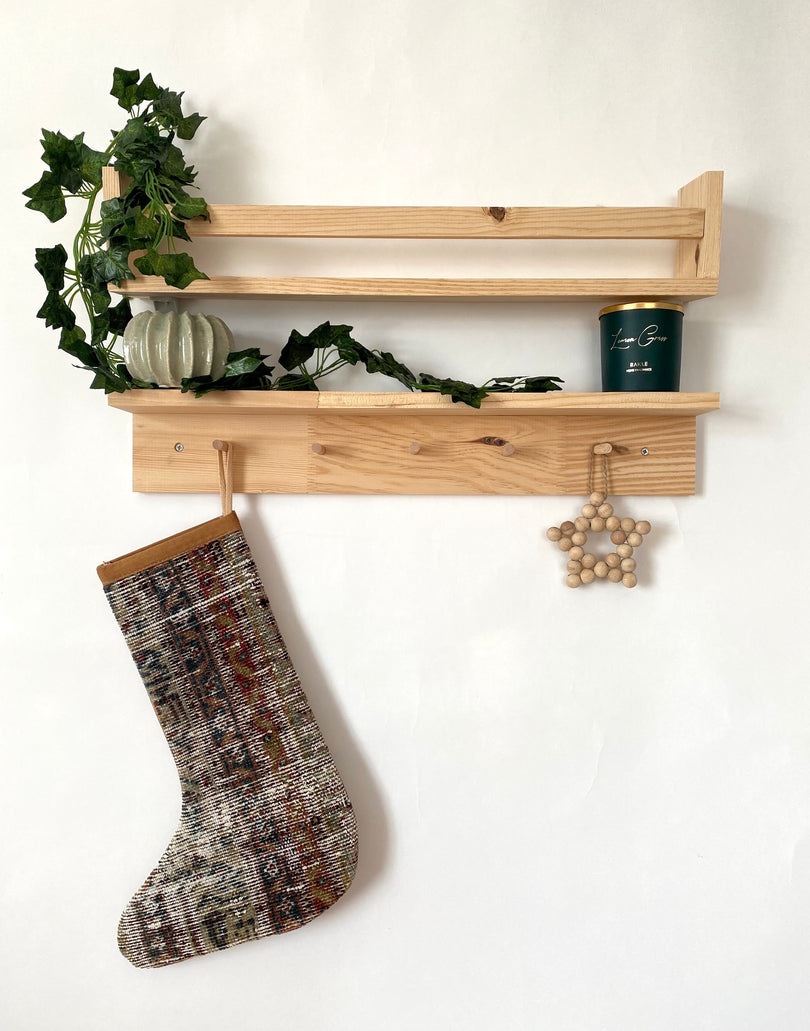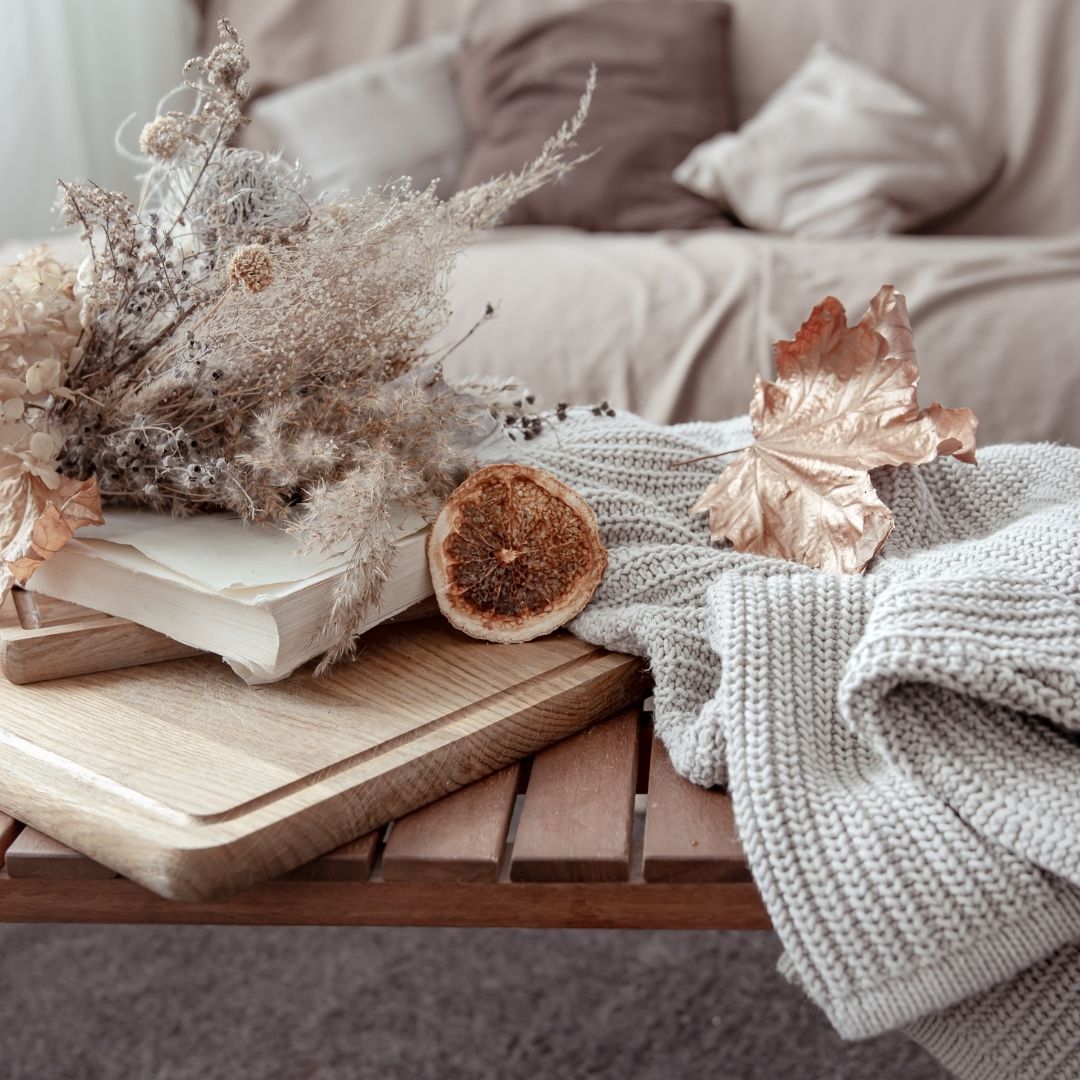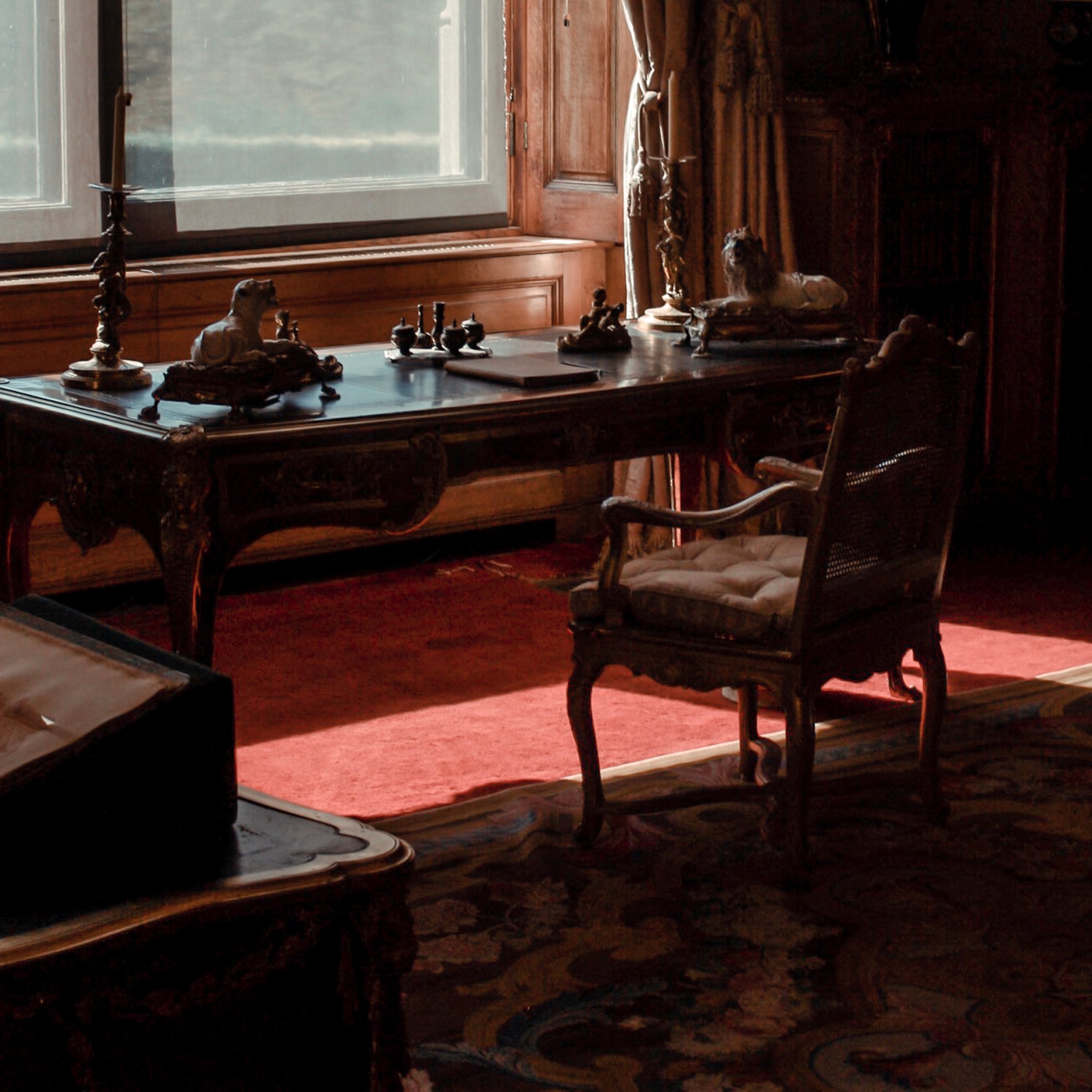Vintage rugs add a special touch of beauty and history to any room. Figuring out what kind of rug you have can help you learn about its history, how to care for an old one, and even how much it's worth.
There are a bunch of hints, many of which you can figure out on your own, that can help you identify rugs you're into and figure out which ones are a good deal and which ones to pass on.
Here at Kuden Rugs, we love the classic beauty of old rugs. Old treasures like these add character, warmth, and a bit of history to your house. If you like the look of old rugs as much as we do, you may be thinking how to spot the real thing among all the fakes made today.
That's why we made this complete guide: to help you tell the difference between an authentic old rug and the rest. So, come along as we take you on a journey through the world of vintage rugs, offering tips and insights to ensure you make the right choice for your space.

What Makes a Rug Vintage?
To fully understand how to spot a vintage rug, it is first necessary to know what is considered "vintage." A vintage rug is usually considered at least 20 to 100 years old, though there isn't a single agreed-upon description.
The wear and tear of time have given these rugs a unique character, color, and charm that new rugs can't match. To determine whether a rug is vintage, we must consider multiple aspects that refer to its history, craftsmanship, and visual appeal.
Authenticity and Provenance
Finding out if a rug is genuine and where it came from is one of the first steps in identifying it as antique. Start by looking into where the rug came from. Many old rugs come from places like Persia (now Iran), Turkey, Morocco, and the Caucasus, which have a long history of making rugs. Authentic rugs from these places are popular because they are well-made and high-quality.
Check any papers, labels, or tags with the rug that might tell you about its age, where it came from, and who made it. Some vintage rugs may have the weaver's name or a seal that shows where they came from. Having this kind of knowledge can help you figure out if a piece is a genuine vintage piece.
Age and Patina
An antique rug's age speaks volumes about the many footfalls it has witnessed and the memories it has absorbed. The beautiful sheen that forms over time, called patina, shows how long-lasting it is.
When you run your hands across a vintage rug, you can feel the years of history imprinted in the fibers. It's a real work of art that changes over time, and the flaws, fade and wear only add to its beauty.
Traditional Craftsmanship
Every vintage rug is made with care and skill. These works of art are made by skilled weavers who often use methods that are hundreds of years old. They pick out the best natural fibers and knot each by hand with great care, making the designs come to life.
Traditional craftsmanship is a hallmark of authenticity, making vintage rugs stand out in mass-produced imitations. When you bring and start using a vintage rug into your home, you're not just adding a pretty decoration; you're also getting a piece of history and culture into your home. Each knot in a vintage rug shows how skilled and creative people were.
Design and Patterns
Rugs from the past are like windows into other times because they show how people thought about art when they were made. A lot of the time, the designs and patterns on antique rugs have cultural and historical value.
They might have colors, patterns, or images that have deep meanings. Checking out these patterns, you can embark on a journey through time and culture, uncovering the rich stories and traditions woven into the fabric of the rug's origin.
Whether it's the floral motifs of Persian rugs, the tribal designs of Moroccan rugs, or the geometric shapes of Turkish rugs, each tells a unique story and connects you to the heritage of the rug's place of origin.
The vintage rug you pick out can become a talking point, letting you and your guests learn about the beauty of its past.

How to Tell a Vintage Rug from a Modern Imitation
So, how can you tell a vintage rug from a modern imitation? Keep reading to find out.
Hand-Knotted Construction
An antique rug's hand-knotted design indicates its quality and authenticity. Skilled craftspeople tie thousands of knots by hand on each rug, making patterns and textures that are very complicated. This traditional way not only ensures the rug will last but it also gives it a unique feel that can't be missed.
When you look at a rug, flip it over and look at the back. Every knot is slightly different in size and shape, which should be clear. This is a clear sign that the yarn was made by hand. Modern versions often use tools to tie the knots, which makes them look uniform and clean. When you touch an authentic old rug, you can feel how much care and attention to detail went into each knot.
Natural Materials

Authentic antique rugs are made from natural materials like wool or cotton. These materials not only give the rug its unique look and feel, but they also wear well over time. Wool, in particular, gets softer and more unique over time. A superficial burn test can help you figure out what kind of material a rug is made of.
Cut off a small piece of the rug's fibers and light it on fire. The smell of natural fibers will be like hair on fire, while the smell of manufactured fibers will be like chemicals. Also, the ash from natural fibers is easy to break up, but the ash from manufactured fibers will harden into a plastic-like substance. This test can give you a good idea of how authentic the rug is.
Traditional Dyes
Natural or vegetable-based dyes are used to color traditional vintage rugs, which gives them colors that are soft, gentle, and nuanced. Over time, these colors can get better and make a beautiful patina. Modern copies, on the other hand, often use synthetic dyes that make colors that are bright and consistent.
A color test can be done by wetting a small, out-of-the-way part of the rug and blotting it with a white cloth. If the colors bleed or run, it's a sign that synthetic dyes were used. The muted and time-worn colors of a vintage rug are a testament to the natural dyes used in its creation, which deepen and enrich the rug's character over the years.
Wear and Tear
Antique rugs often show signs of wear and faded colors after a long time, especially in areas with a lot of foot traffic. Many modern rugs try to look like old ones, but genuine antique rugs have wear and tear from being used for decades.
When you look at a rug, pay special attention to the spots that get the most foot traffic, like the middle. Genuine antique rugs will have wear and tear from being used, while modern copies will look more regular. Each old rug is a one-of-a-kind work of art because of the way it looks and how long it has been used.
Unique Designs
One of the coolest perks of owning a vintage rug is unraveling the mysteries behind its unique designs and patterns. Each design is like a storybook, weaving tales of its origins and reflecting the culture of the era it was crafted in. The designs on antique rugs often capture the creative spirit of the artisans who crafted them, showcasing designs that are a unique snapshot of a specific time and place.
Pay close attention to design flaws, minor color differences, and other oddities that you won't find in modern rugs that are mass-produced. Looking at a vintage rug, you can connect with the art of the past through a piece of history.
It's like owning a canvas where the weaver's creativity and culture have been woven into the threads, offering you a glimpse into the artistry of another time and place.
Imperfections and Irregularities
Don't let flaws stop you from buying a vintage rug; see them as part of its charm. People love antique rugs because they have little flaws and differences in knot size and design alignment. The rug is one of a kind because of these little flaws that give it character and meaning.
Modern replicas of antique rugs often try to look perfect and machine-made, missing the uniqueness that makes vintage rugs unique. The flaws and irregularities in a vintage rug show that it was made by hand with care and skill. Look closely, and you'll see that these flaws tell a story. This makes each antique rug unique and full of history to share.
Fringed Edges
Another way to tell the difference between an old rug and a modern copy is if the ends are fringed. Vintage rugs typically have fringed edges that are an integral part of the rug's construction. Most of the time, these frills are made by hand-knotting the warp threads of the rug. Pay close attention to the edges of a rug when you look at it.
As long as they blend in with the rest of the rug's weave and look like they belong with the pattern, you can be sure it is an antique piece. Some modern rugs have fringes that are machine-stitched or glued, which are less authentic or unique than fringes that are hand-knotted. If a vintage rug has hand-knotted fringes, you can be sure that a real artist made it.
Documentation and Provenance
If you're lucky, the vintage rug you want might come with paperwork or an account of where it came from. Such records can provide valuable insights into the rug's age, origin, and previous owners. Trustworthy sellers often provide this information as a way to authenticate their rugs.
There may be paperwork that includes information about the rug's weaver, its place of origin, and even its former owners. This history not only adds to the rug's value but also enhances the sense of connection you have with it. If you buy an old rug with a known history, you're not just getting a work of art; you're also becoming a part of its continued story.
Expert Appraisal
To really know if a vintage rug is the real deal, it's a good idea to bring in a trained rug appraiser knowing all the ins and outs, from the rug's origins and crafting techniques to the materials used.
An appraiser can do a thorough check to confirm how old the rug is and what it's worth. Their expert opinion can be super handy, especially when dealing with precious antique rugs. Sure, evaluations have a price tag, but they can give you that comforting assurance that you're snagging a true vintage gem.
Bottom Line
Spotting a vintage rug is like a treasure hunt, letting you tap into a rich tapestry of history, culture, and artistry. You can distinguish a true vintage piece from a modern replica by looking for telltale signs of authenticity, like handmade craftsmanship, natural materials, traditional dyes, and unique patterns. Embrace the little imperfections and signs of wear; they're what make each old rug one of a kind.
By keeping an eye on these factors, you can be confident that the vintage rug you pick will vibe perfectly with your taste and style. As you hunt for that perfect antique rug, remember: each one is a masterpiece with its own unique tale to share. Let the rich history and character of vintage rugs add a dash of excitement to your space and become a cherished element of your home's look.
Are you ready to learn more about antique rugs and add a touch of classic beauty to your home? Kuden Rugs has a collection that is an excellent place to start your search. Discover authentic vintage rugs that blend history, culture, and craftsmanship into a single work of art. Start your journey today!

